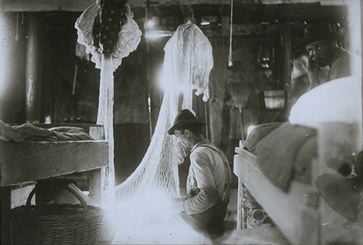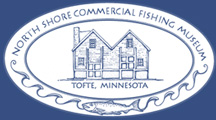 |
 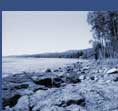  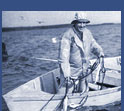 |
|||
Plan Your Visit
|
TechniquesGill netting and hook line were the two primary techniques used by North Shore fishermen. Although gill nets were used for both trout and herring, hook line was used only for trout.
Hook LineA hook line was used for late spring and summer trout fishing. Drop lines, baited hooks on a line with a lead sinker, were attached to a horizontal main line at varying intervals. Small herring, caught in gill nets and cut diagonally in half, were used for bait. Collecting fish from the hookline was an altogether different thing from picking a herring net. Each fish had to played and landed. Setting the netsNets were set in the beginning of the season and moved several times; new anchors were needed with every move. Setting the anchors for the nets was a hazardous procedure and usually took more than one person. Attached to a coil of strong rope, the anchor was slipped overboard very carefully. The rapidly descending line could entangle and pull a person overboard. Picking the gill nets North Shore fishermen were known as "herring chokers," a term that accurately refers to the method of squeezing a herring through the mesh opening of a gill net. Gill nets were "picked" or harvested every day when weather permitted. The net was brought up and over one end of the boat and the boat was pulled along under the net as the fisherman picked the fish from the net. The net sank back into the lake as it was picked. Nets could be picked by one man in a skiff if necessary. LinecutterFishermen used line cutters to sever the anchor line from the anchor when the nets were moved or taken up for the season. This device was slipped over the anchor rope and lowered on a cord. When it reached the anchor, the cord was pulled sharply and the anchor line was cut. Most line cutters were handmade by individual fishermen. FloatsThe gill net was suspended at the desired depth by ropes placed every thirty six feet and attached to floats on the surface. During World War II, the old cedar floats were replaced by aluminum and plastic floats. "Corks" and leadsThe gill net was held open under the water by a line of linseed-treated cedar "corks" at the top and a line of lead weights placed every six feet at the bottom. Soaking and rubbing corks in linseed oil preserved them and gave them buoyancy. The uphauler buoy was so named because it marked the ends of the gill nets which were hauled up when the nets were removed or "picked." Uphauler buoys had a wooden pole with a cloth flag attached to mark the location of the nets.
|
|||
 |
||||
|
Plan Your Visit | Events & Programs | Exhibits | Collections | Museum Store | Membership | About Us | Home © copyright 2003, North Shore Commercial Fishing Museum. http://www.commercialfishingmuseum.org web design by homepage design |
||||
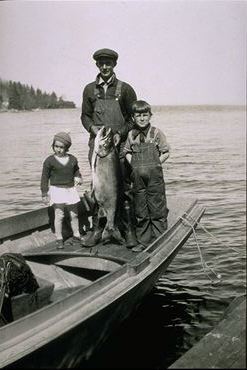 A
gill net has mesh openings that trap fish by the gills when they attempt
to swim through. The weighted net is suspended at the desired depth
by ropes placed every thirty six feet and attached to floats on the
surface. Gill nets were used to net herring nearly year round and trout
in the late summer and fall. They were often deployed in gangs, or long
linear groups of connected nets.
A
gill net has mesh openings that trap fish by the gills when they attempt
to swim through. The weighted net is suspended at the desired depth
by ropes placed every thirty six feet and attached to floats on the
surface. Gill nets were used to net herring nearly year round and trout
in the late summer and fall. They were often deployed in gangs, or long
linear groups of connected nets.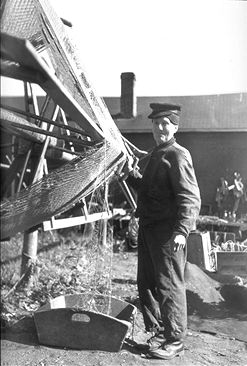 Net
roller
Net
roller 